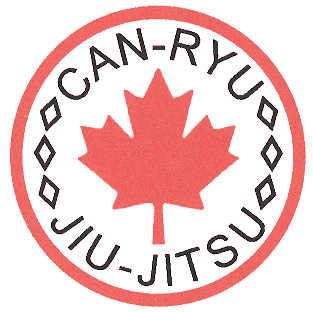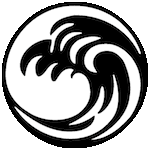Our Style: Can-Ryu Jiu-Jitsu
 |
There are no rules in self-defense, only results Can-Ryu Maxim |
Jiu-jitsu is the art of self-defense that was developed by the Japanese samurai for when they were unarmed. It translates to "the art of pliancy," which is used to absorb and control an attacker. Can-ryu Jiu-jitsu is a modern style of Jiu-jitsu, created for the unique temperament of Canadian society and is taught to be practiced in accordance with Canadian self-defense laws (Section 34 of the Criminal Code of Canada).
The style was founded by Professor Georges Sylvain, a 15-year police veteran and Tactical Training Officer with an international reputation. It draws from a variety of combat influences, including Japanese Jiu-jitsu, Standard Police Techniques, Judo, Western Boxing, and Karate. It is not a sport and thefore is not limited by rules under which points are awarded in competitions. It has a long history of development within police and law enforcement circles. In 2008, Mr. Sylvain retired, entrusting the style to Ed Hiscoe Shihan (current head of style), with his son Steve Hiscoe Shihan appointed as heir apparent to the style. Can-Ryu Jiu-jitsu uses fundamentals that even the odds in self-defense situations, transcending differences in size, weight, height, and reach. The core curriculum of Can-ryu Jiu-jitsu follows 4 tenets:
If you have any further questions about Can-Ryu Jiu-jitsu, don't hesitate to contact us. For more info about Jiu-jitsu and martial arts training in general, check out our useful articles for new students or read more about us on our martial arts blog.
The style was founded by Professor Georges Sylvain, a 15-year police veteran and Tactical Training Officer with an international reputation. It draws from a variety of combat influences, including Japanese Jiu-jitsu, Standard Police Techniques, Judo, Western Boxing, and Karate. It is not a sport and thefore is not limited by rules under which points are awarded in competitions. It has a long history of development within police and law enforcement circles. In 2008, Mr. Sylvain retired, entrusting the style to Ed Hiscoe Shihan (current head of style), with his son Steve Hiscoe Shihan appointed as heir apparent to the style. Can-Ryu Jiu-jitsu uses fundamentals that even the odds in self-defense situations, transcending differences in size, weight, height, and reach. The core curriculum of Can-ryu Jiu-jitsu follows 4 tenets:
- Simplicity. A student should be able to be able to learn a defensive technique in a way that is usable in less than 3 minutes. Our core curriculum comprises of techniques that are the easiest to learn for the greatest variety of body types and attack situations.
- Commonality of Technique. We strive to use similar types of techniques in similar defensive situations. The purpose of this is to prevent brain stalls, which can occur in the pressure of an attack as a person tries to "think" of what to do. If the defense that is taught is the same within all the different minor variations of the same attack, it reduces the chances of this.
- Gross Motor Skills. In the interest of making our core curriculum easier to learn and apply, we emphasize the use of gross motor skills over fine motor skills in self-defense situations. Fine motor skills are introduced at the higher levels.
- Awareness of Additional Threats. In all the defensive techniques we use in our core curriculum, we emphasize awareness for the potential for additional threats, such as multiple attackers, weapons, and environmental hazards.
If you have any further questions about Can-Ryu Jiu-jitsu, don't hesitate to contact us. For more info about Jiu-jitsu and martial arts training in general, check out our useful articles for new students or read more about us on our martial arts blog.
© 2012 - 2018 Empty Cup Enterprises. Pacific Wave Jiu-Jitsu is a division of Flip Side Ventures Inc.
This martial arts/self-defense school is located in Richmond BC, easily accessible from Vancouver, Delta, New Westminster, Burnaby, Ladner, Surrey, Tsawassen and White Rock.





